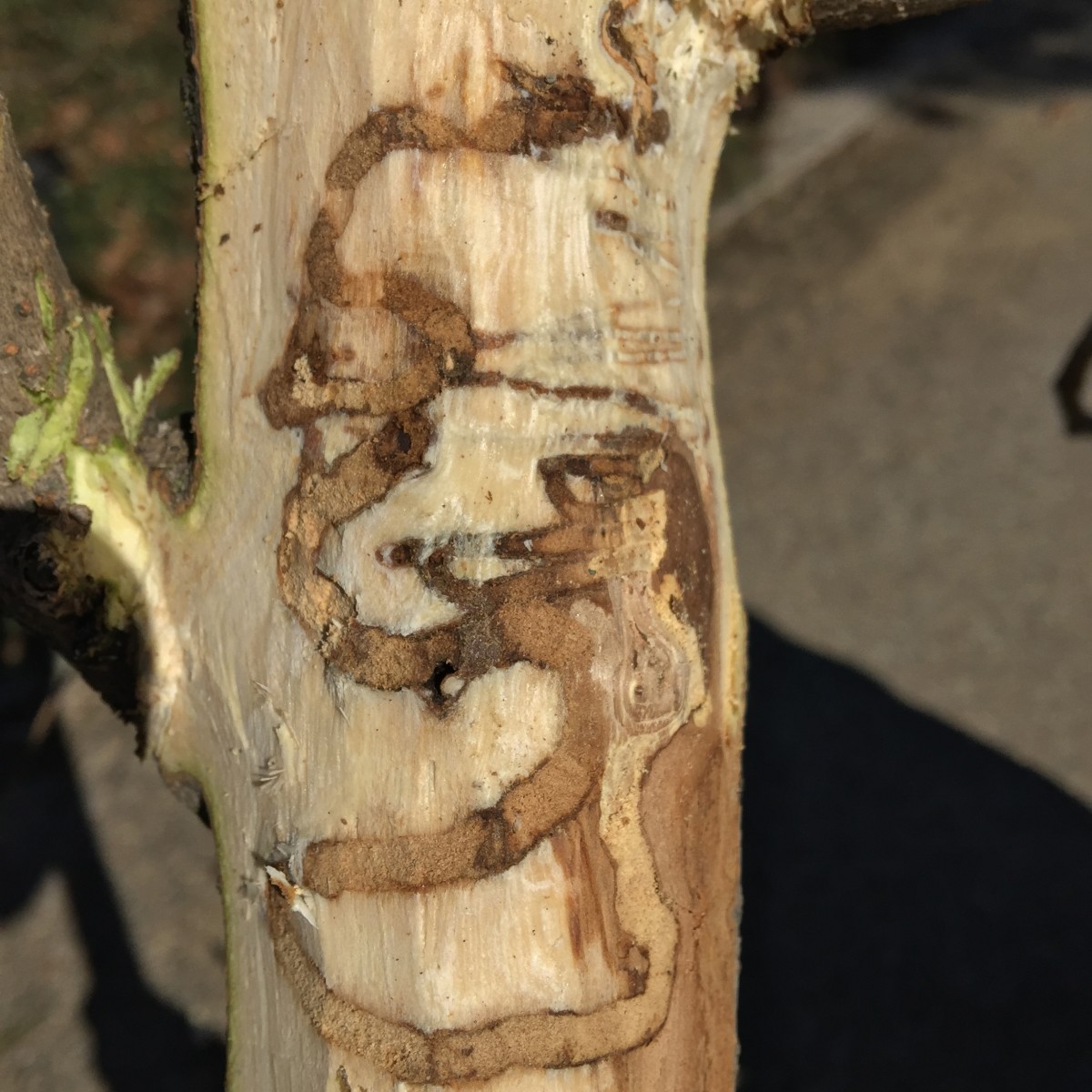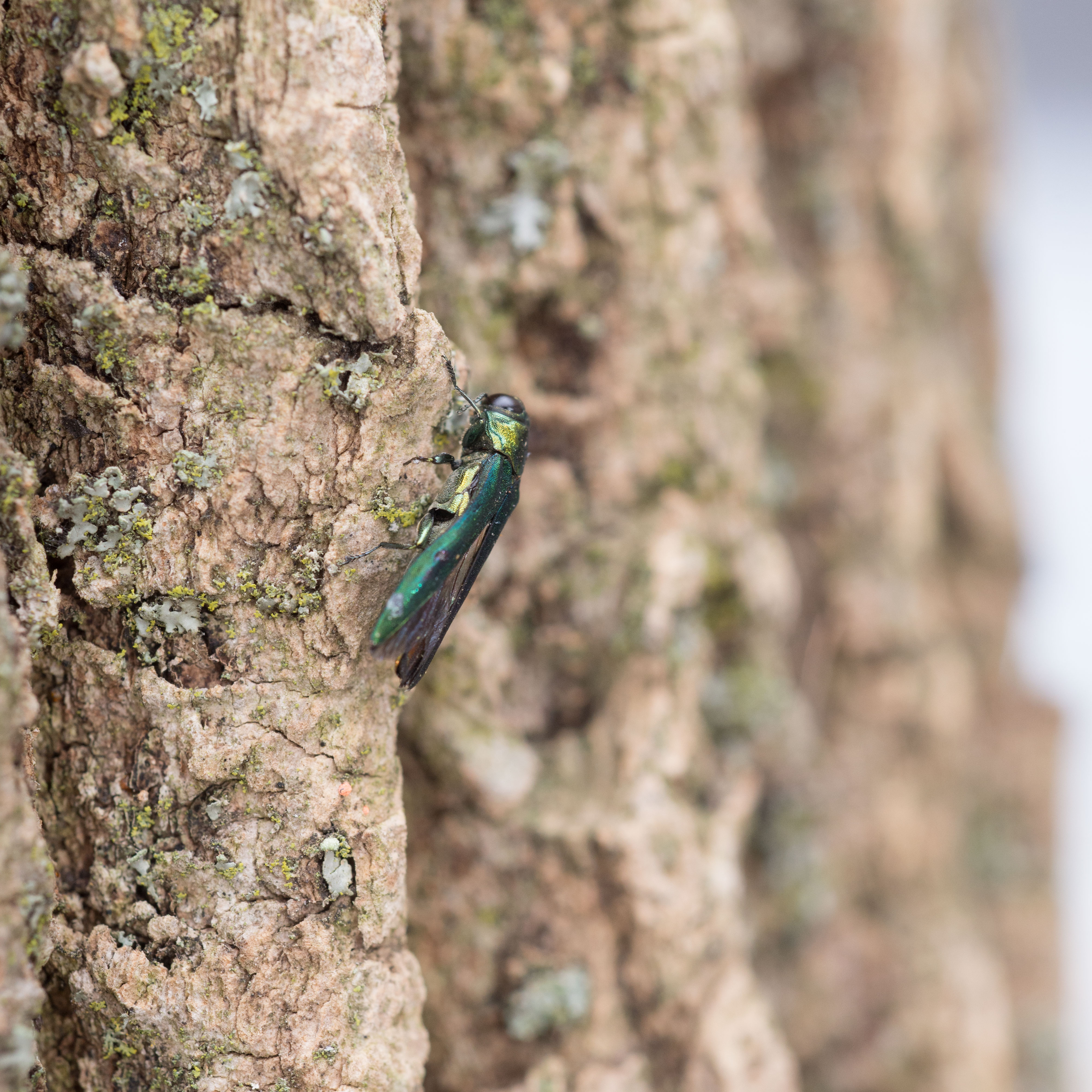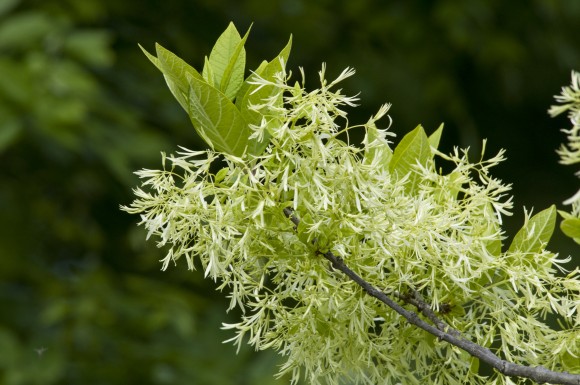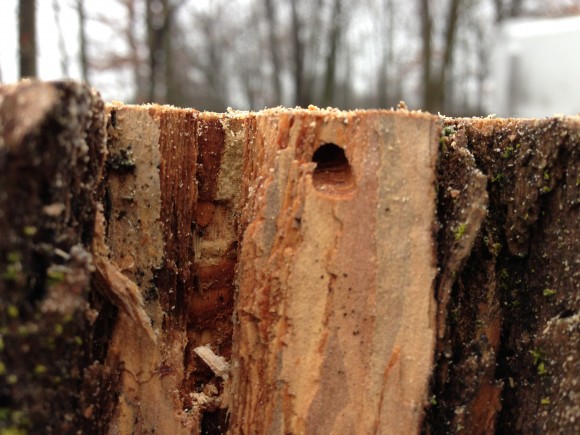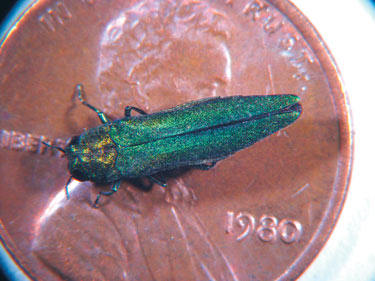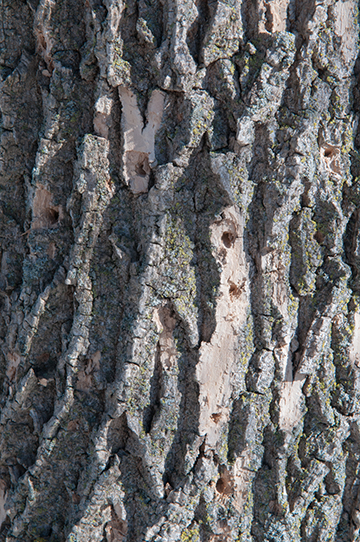Emerald ash borer appears to have spread to a different host, and has now been found and confirmed at the Chicago Botanic Garden. But there’s no need for us to panic—it’s just an interesting find to document.
As I blogged in late 2014, a college biology professor in Ohio (Don Cipollini, Ph.D., of Wright State University) discovered emerald ash (EAB) borer attacking white fringetrees (Chionanthus virginicus). Soon after his discovery in 2014, the Garden monitored its fringetree collection and found no signs of EAB activity on our fringetree collection (around 40 trees).
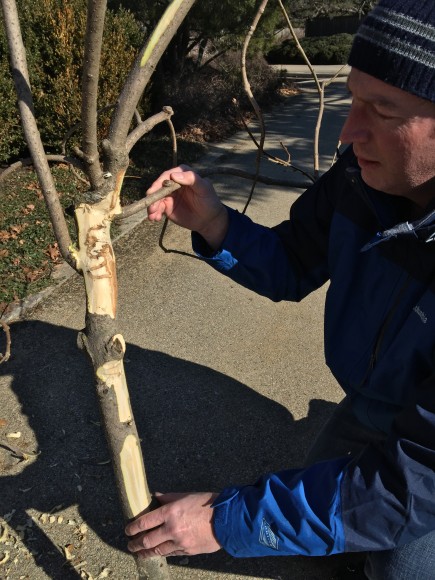
Two weeks ago I had the privilege of meeting Dr. Cipollini here at the Garden and scouting our fringetrees with him. Cipollini and a Ph.D. student are studying EAB on fringetrees and are scouting known populations of fringetrees in areas of EAB activity. Where better than a Garden like ours with a documented collection of fringetrees?
We scouted nearly all of our fringetree collection very closely. Cipollini knew exactly where to look (way beyond the obvious) and carefully reviewed each of the Garden’s fringetrees. About halfway through the scouting process, a suspicious sunken area was found on one tree. With a sharp chisel, a small section of bark was scraped, revealing a borer gallery. We later removed the limb and found a D-shaped EAB exit hole not far from the gallery. Cipollini indicated that he felt the damage was about 2 years old, and this coincides with time that EAB was at its highest level at the Garden. Of all the trees we very closely monitored, we found only one that had been very slightly damaged by EAB.
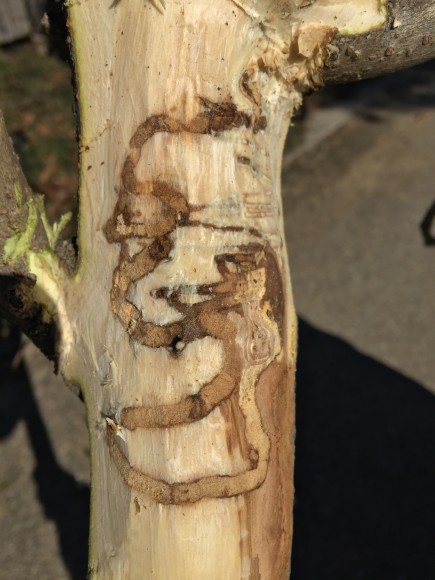
We do not need to start treating our fringetrees for EAB or recommend it. The damage is old, and took place when EAB was hitting the Garden the hardest a couple of years ago; so at very high population pressure, it makes sense that they may feed on another closely related tree or shrub. Ash (Fraxinus) is in the olive family (Oleaceae), as is fringetree (Chionanthus), lilac (Syringa), Forsythia, privet (Ligustrum) and swamp privet (Forestiera). These other shrubs are being monitored as well, but it is thought that they may not be an attractive alternative host, as the EAB does not seem to go after small-diameter branches that are prominent on these other olive family shrubs.
As I mentioned in my earlier blog post, I do suggest if you have a fringetree that you look it over for signs of EAB activity.
The Garden is a member of the Sentinel Plant Network, a group that unites botanic gardens in monitoring and providing education on exotic plant pests and pathogens, and works in partnership with the National Plant Diagnostic Network (NPDN).
If you are a plant and bug person like me, please consider becoming a NPDN First Detector and help be on the lookout for these exotic plant pests and pathogens. The NPDN offers an online training course to become a First Detector at firstdetector.org. It’s free, and upon completion, you even get a printable certificate!
©2016 Chicago Botanic Garden and my.chicagobotanic.org

